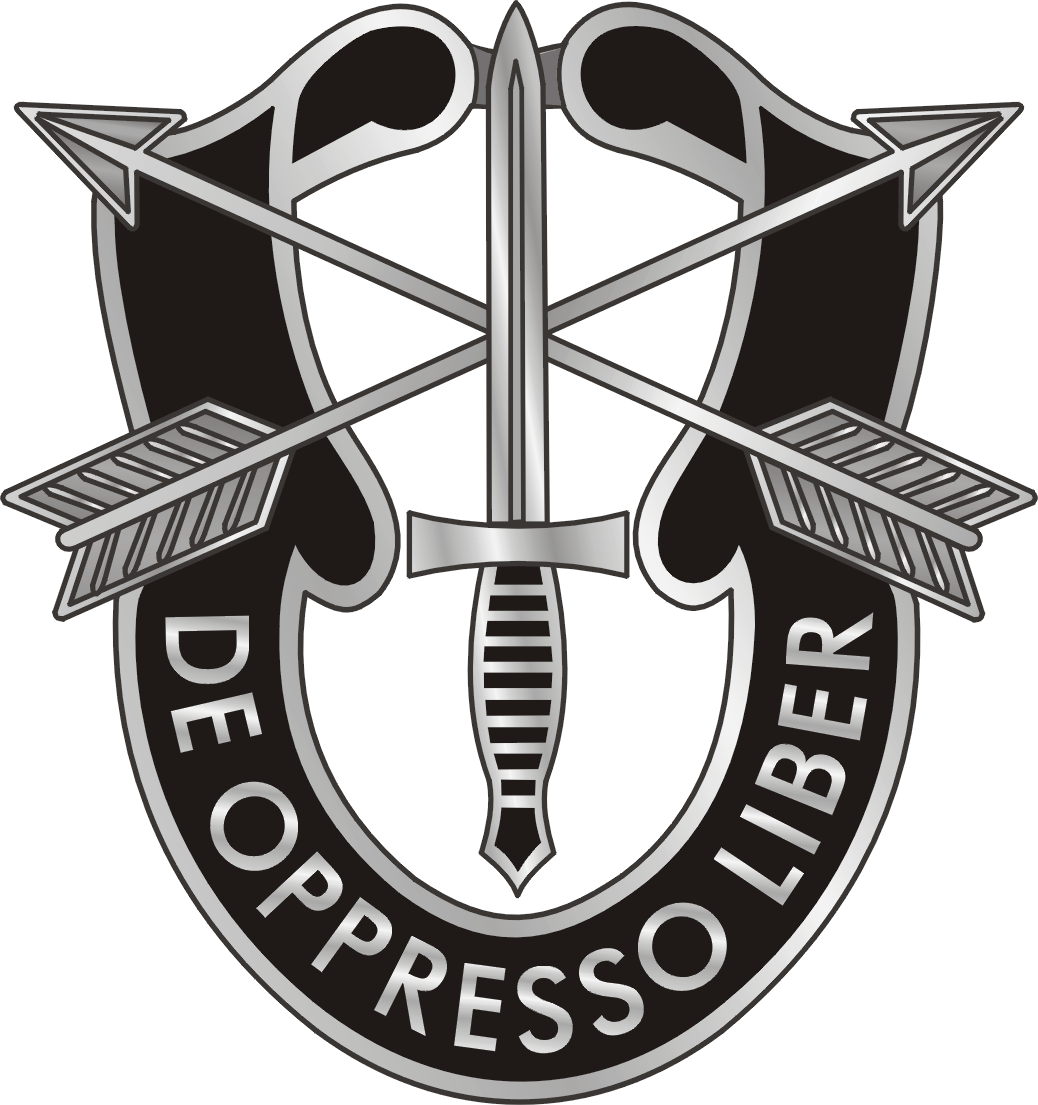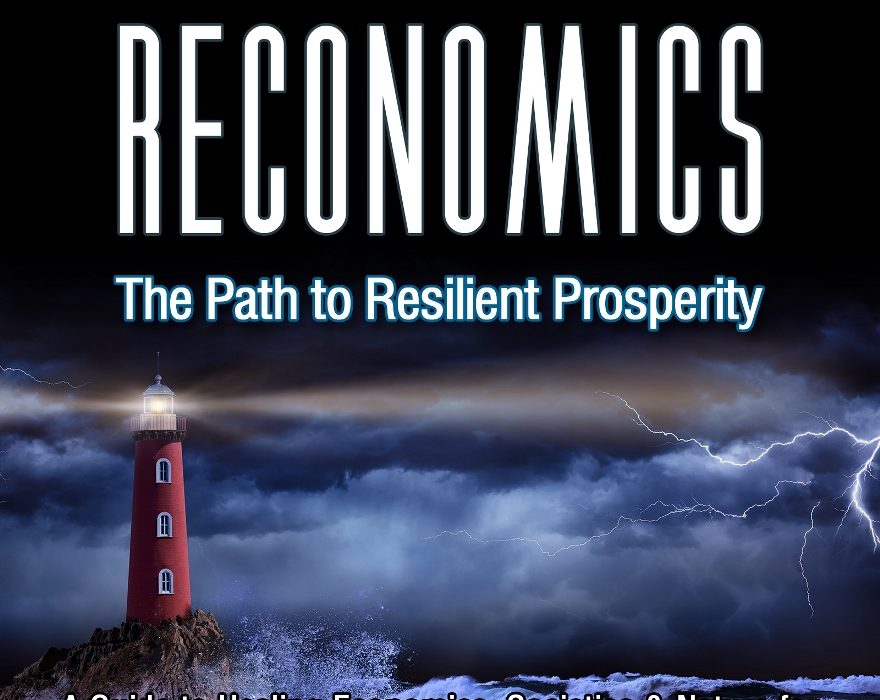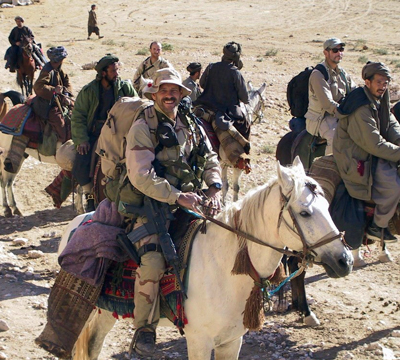This issue’s Sneak Peek from Storm Cunningham’s upcoming third book, RECONOMICS: (coming January 2020) deals with the question of how a community or region could create a public agency or a public/private, citizen-led team to help it achieve the goal of resilient prosperity. A rather usual model is suggested: the Green Beret A-Team.
Creating an Agency and/or Team to Implement Resilient Prosperity in Your Community
One of the biggest challenges facing cities today is that no single organisation has complete control
over the solutions to increase our resilience to the broad range of challenges we face.
– George Ferguson, mayor of Bristol (UK)
Three of the fundamental characteristics of resilience are redundancy, scalability, and integration. A system with redundant functionality can better-withstand damage while continuing to operate. A scalable system will be able to grow without losing its balance or structural integrity. An integrated system allows resources and information to flow efficiently to wherever they are needed.
New technologies are often the key. [For instance, cities are now switching to inexpensive, cloud-based disaster recovery solutions, such as CloudVelox. Until recently, redundant data systems were hosted locally, which was expensive; prohibitively-so for smaller communities.]
It’s all well and good to know how to revitalize a place and/or make it more resilient. It’s another thing to know how to actually implement a program that can cope with loss of resources or personnel (redundancy), that can reach into all corners of your community or region (scalability), and that represents the needs of—and taps the resources of—all stakeholders (integration).
A major challenge to achieving both revitalization and resilience are their holistic natures. A single person as Prosperity Director (or whatever you call them) can’t be expected to cope with the breadth and depth of knowledge required to manage all aspects of the natural, built, and socioeconomic environments, not to mention the legal, political, cultural, and financial components.
Creating a Prosperity Agency
The most obvious solution is to create a public agency with that mission. An existing public agency could be repurposed for Adaptive Renewal, reconnected to other agencies to make it effective, and thus be renewed in the process. This would mirror the very process it’s meant to apply to their community.
But such a transformation would require a visionary leader with serious commitment, since there will be a powerful gravitational pull back to the institution’s comfort zone. If an agency were troubled or underutilized and already due for an overhaul, this could help. But the ideal would be an agency so influential, so trusted, and so well-funded that they simply added Resilient Prosperity to their mission.
Repurposing or expanding an existing agency makes sense, since a budget and personnel would already be in place. What kind of agency might be repurposed in this manner? Almost any kind:
- Agencies already focused on redevelopment, regeneration, and/or economic development;
- A regional agency would be connected to a broad diversity of environments and stakeholders;
- Natural resource agency (such as watershed) are well-positioned because they affect everyone;
- A social service agency might have good public trust and outreach abilities;
- An infrastructure or public works agency would be well-positioned since they deal with the structure, flows, and vital functions of the community;
- A planning agency might be well-positioned, if they were willing to break out of their traditional planning silos and live up to the vast untapped potential of the profession.
Creating a local Prosperity Team
If launching a new agency or repurposing a public agency is too much of a stretch at present, then creating a multifaceted team might be more practical. But how could even the most competent team be effective across an entire city, region, or nation? Only via redundancy and scalability. Using the same template for each, you could have a leadership/advisory team, a training team (which could create more teams, if needed), and as many project teams as needed.
A shared template helps teams communicate with each other. It enables each team to the various elements of your Resilient Prosperity program. There will be a tendency to create specialized teams with reduced diversity. Avoid it. If a project team is formed to restore a historic theater, there’s no problem with boosting architectural and heritage expertise on the team. But it would be a mistake to eliminate seemingly-irrelevant members, such as watershed, ecosystems, or agriculture.
For instance, a theater doesn’t exist in isolation; its real estate and function is part of the natural and socioeconomic fabric of an entire region. Agricultural team members don’t just represent corn or cattle: they represent farmers and ranchers. They could thus ensure that the theater’s plan takes into account reaching out to rural audiences. They would think to use its parking lot as a farmers’ market on weekend mornings, thus making the theater a connection between downtown and rural. Of course, you shouldn’t feel forced to justify the presence of a fishery expert at a discussion of downtown parking. It’s the holistic perspective of the group—and its ability to produce surprising ideas and insights—that counts, not the ability to draw direct lines among every aspect of the community.
Likewise, the watershed team member might think of putting a green roof on the theater, or bioswales around the parking lot. The ecosystem member might suggest native plant species for the green roof that might otherwise have been ignored, thus boosting native pollinators. A fishery expert might suggest including a seafood section in the farmers’ market, thus connecting downtown to different rural stakeholders. And any of them might think about including adjacent properties in the project, whereas your historic preservation expert might tend to focus solely on the building envelope of the theater.
The central principle at work here is to avoid assuming that any aspect of your community is irrelevant to any other. One of the common factors I’ve encountered in stellar examples of revitalization is the presence of a visionary individual who “gets” it all: a Renaissance person who has a better-than-average understanding of how natural, built, socioeconomic, and human assets and dynamics all fit together.
Such visionaries—whether mayors, developers, social entrepreneurs, or non-profit leaders—are rare, but they can be fostered. The key is cross-training: assemble a team with all of the necessary component disciplines, and then have them constantly train each other. They won’t all become experts in every field, of course, but they will gain a basic understanding of each. This gives them an ability to converse effectively with experts in each field. Some fields will likely require a sub-team. Your infrastructure specialist, for example, might rely on specialists in each of the many forms of infrastructure.
 Green Beret A-Team Model: An ideal Prosperity Team model comes from an unlikely source: U.S. Army Special Forces (SF), popularly known as Green Berets. They might be the most efficient and effective military outfit ever created. I served on a SCUBA A-Team as a medic in the 7th Special Forces Group (1972-4). [I never saw combat: By the time I finished 1 ½ years of SF training, the Army wasn’t sending new SF troops into Vietnam. Green Berets are normally first in and first out. As a peace-loving ex-hippie freshly back from 3 years of hitchhiking around the world in search of Truth, that didn’t break my heart.]
Green Beret A-Team Model: An ideal Prosperity Team model comes from an unlikely source: U.S. Army Special Forces (SF), popularly known as Green Berets. They might be the most efficient and effective military outfit ever created. I served on a SCUBA A-Team as a medic in the 7th Special Forces Group (1972-4). [I never saw combat: By the time I finished 1 ½ years of SF training, the Army wasn’t sending new SF troops into Vietnam. Green Berets are normally first in and first out. As a peace-loving ex-hippie freshly back from 3 years of hitchhiking around the world in search of Truth, that didn’t break my heart.]
Back then, Army SF was the only U.S. military unit referred to as “Special Forces”. Today, the U.S. Special Operations Forces (SF) comprise elite units from the Army, Navy (SEALs), Marines, and Air Force. As of 2013, teams are operating in about 70 countries.
I’m going to offer a fair amount of detail about the background and operational style of the U.S. Army Special Forces; more than you’d expect in a guide to Resilient Prosperity. It’s important to understand the structure and functions that make them so effective. That way, you can translate these principles into a local “force” that can help create a better future for your community, region, or nation.
One characteristic makes Green Berets very different from Navy SEALS, Marine Corps Raiders, Army Rangers, Army Delta Force, or Air Force Special Operations Forces: Unconventional Warfare (UW). All of those units conduct Direct Action (DA) missions. These are the operations you see in the movies and news media: rescuing hostages, killing Osama bin Laden, etc. While DA accounts for 100% of the missions of the other SF outfits, it traditionally comprises only about 20% of Green Beret missions.
The other 80% is Unconventional Warfare. UW derived from the CIA’s Civilian Irregular Defense Group (CIDG) program in Vietnam. Green Berets were created as the combat arm of the CIA, and so have sometimes been used in nefarious ways. That’s not their fault: troops seldom understand the hidden agendas their sacrifices serve. The CIA now has its own combat unit, the Special Operations Group (SOG) of the Special Activities Division (SAD), but still draws on SF troops.
Unconventional warfare is a very different mode of winning a war. It’s based on befriending, educating, and supporting local communities, so they can defend themselves. A Green Beret team is designed to train and equip a 4000-person guerrilla battalion. This is what they did with the indigenous Montagnard (Degar) tribes of South Vietnam, who were being persecuted by the North Vietnamese communists.
Unconventional warfare is thus a force-multiplier. This mode involves working behind enemy lines for long periods of time. They live with, work with, and teach local people (in their own language) to fight their own battles. The Green Beret motto is de oppresso liber: to liberate the oppressed. So, Green Berets are primarily teachers, despite their fighting expertise. They actually avoid conflict as much as possible: when you’re a small group behind enemy lines, remaining undetected is your best weapon.
Green Berets can turn the course of a war with very little financial expenditure. We saw this when rag-tag groups of guerrillas—aided by Special Forces teams—kicked the mighty Soviet military out of Afghanistan (triggering the collapse of the Soviet Union). You might have heard stories of bearded U.S. soldiers in native garb joining a horseback cavalry charge by Northern Alliance mujahedeen fighters against a Soviet armored column in Afghanistan. Those were Green Berets in UW mode. A visiting Pentagon general at the scene said it was the most magnificent spectacle he’d ever witnessed.
A U.S. Army Special Forces A-Team (Operational Detachment) comprises 12 individuals, with built-in redundancy that allows it to split into two completely functional halves if needed. This redundancy creates resilience, allowing the team to maintaining its ability to accomplish the mission despite serious casualties. Each team has two medics, two engineers (for building things or blowing them up), two communication specialists (radios, etc.), two weapons specialists, two operations/intel specialists, plus a commander and assistant commander. All team members go through the same Special Forces qualification course, plus their own specialized training. Structural redundancy is complemented by skill redundancy, via cross-training. Team members constantly teach each other, constantly. Teaching reinforces each member’s knowledge, while further boosting the team’s resilience to attrition.
Earlier, I suggested that there are three human personality types that result in three types of government policy: a) Sprawlers, who build cities and damage nature; b) Sustainers, who maintain cities and conserve nature, and c) Revitalizers, who renew cities and restore nature.
You have wondered where the destroyers and war-mongers fit into that list. But that taxonomy was only meant to include those who play a legitimate role in the development process of civilizations. That said, those military members who play a purely defensive role comprise a legitimate part of building a society. There’s no chance of progress if they don’t survive aggression.
I’ve found that the military loses its purely defensive role under three circumstances:
- When their country is no longer satisfied with its current borders;
- When their country wants to install dictators in other nations in order to supply their companies with cheap labor and/or natural resources; and,
- When the industries that profit from war gain too much control of government, and instigate wars. (This includes wars on poverty, crime, and drugs; all of which have been industrialized. So, solving the problem would damage or destroy multi-billion-dollar corporations, and reduce career prospects for thousands of government employees.)
Former President Eisenhower warned us of #3, but the war companies have spent millions on PR firms to .program Americans into associating “military-industrial complex” with conspiracy nuts. OK: I’ll get off my soapbox now.
Prosperity Teams: Using an expanded version of the 8-sector taxonomy of restorative industries first documented in my 2002 book, The Restoration Economy, your Prosperity Team could echo a Green Beret A-Team. With just 12 people, it wouldn’t have structural redundancy, but cross-training would provide functional redundancy, and doubling it to 24 would create structural redundancy, if desired.
An ideal 12-person Prosperity Team would have one each of the following specialties/functions:
- Infrastructure renewal (energy, telecommunications, transportation, water, sewage, etc.);
- Brownfields remediation & reuse;
- Heritage structure renovation & reuse;
- Catastrophe recovery (natural disaster, conflict, human-made disaster, etc.);
- Ecosystem restoration & reconnection (boosting biodiversity);
- Watershed restoration (improving water quality & availability);
- Fishery restoration (aquatic or marine, commercial or recreational);
- Agricultural renewal (restoring native pollinators, increasing topsoil quality/quantity, creating local food system to improve rural economy, reducing nutrient/pesticide runoff, etc.);
- Social renewal (housing, education, health, support services, etc.);
- Finance/economics (TIF, bonds, equity, grants, tax credits, entrepreneurial support, relocation & retention incentives, etc.);
- Policy/legal (reducing obstructions/adding incentives for renewal, etc.);
- Team leader.
As mentioned earlier, resilient solutions are 1) redundant; 2) flexible/scalable; and 3) integrative/ strategic. The above team model would embody all of these qualities. By “integrative”, I mean that team members could be from both the public and private side, with the private sector comprising members from for-profit and non-profit organizations, as well as citizens. This remedies silos and fragmentation.
For instance, the policy expert might come from government, the brownfields remediation expert from an engineering firm, the ecosystem restoration expert from a non-profit or university, the finance expert could be your economic development official, and so on. With such a team creating more such teams, your Resilient Prosperity program would model the very resilience it’s intended to create.
Prosperity Teams as Doers, not just Teachers: One of the major roadblocks to effective revitalization work is that making revitalization a responsibility of government means they have to actually DO something. Most political leaders prefer to just approve or reject the proposed actions of others, not take meaningful action themselves.
So, your Prosperity Team(s) need not be limited to training. Just as Green Beret teams often fight alongside the local folks—despite their official status as “military advisors”—so too can your teams implement projects. The key is in your selection of team members. If you want a Prosperity Team to actually design and launch a project, choose team members who bring the necessary resources (money, property, authority, etc.) to the table. That way, the team can form the basis of a public-private partnership to fund the project once it’s approved.


